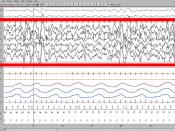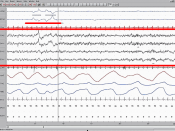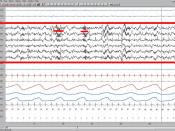Dreaming Dreaming is a form of mental activity that occurs during sleep. The nature of dream activities has been characterized by many clinical and laboratory studies. These studies are more perceptual than conceptual: things are seen and heard rather than being subject to thought. Visual perception is present in almost all dreams, and auditory experience is 40 to 50%, but dreams are not necessarily visual imagery. Congenitally blind people dream in auditory and sensory-motor modes. One difference between waking and dreaming consciousness is that the latter tends to be an internal hallucinatory-like experience disconnected from the external world.. The senses of touch, taste, smell, and pain are not commonly experienced. Emotions are felt, but usually a single, powerful emotion is felt such as fear, anger, or joy, for example. Most dream content consists of memories, and are in the form of interrupted stories with frequent shifts of scene. One difference between waking and dreaming consciousness is that the latter tends to be an internal hallucinatory-like experience disconnected from the external world.
Many dreams collected in laboratories are rather common, but some people tend to experience some bizarre dreams. Early in the 20th century, Sigmund Freud believed that dream content was composed of the mental processes different from that used in the awake state. He believed this was what dominated the dreaming mind. He described this "process" as characterized by more primitive mechanisms, by rapid shifts in energy and emotion, and by a great deal of sexual and aggressive content derived from childhood. (Hartmann, E. 1997) There are 4 stages of sleep. The individual goes from awake to stage 1, then to 2, 3, and finally 4, the deepest stage of sleep. After spending about 20 minutes in stage 4, they return to stage 1 and progress back to stage 4.


